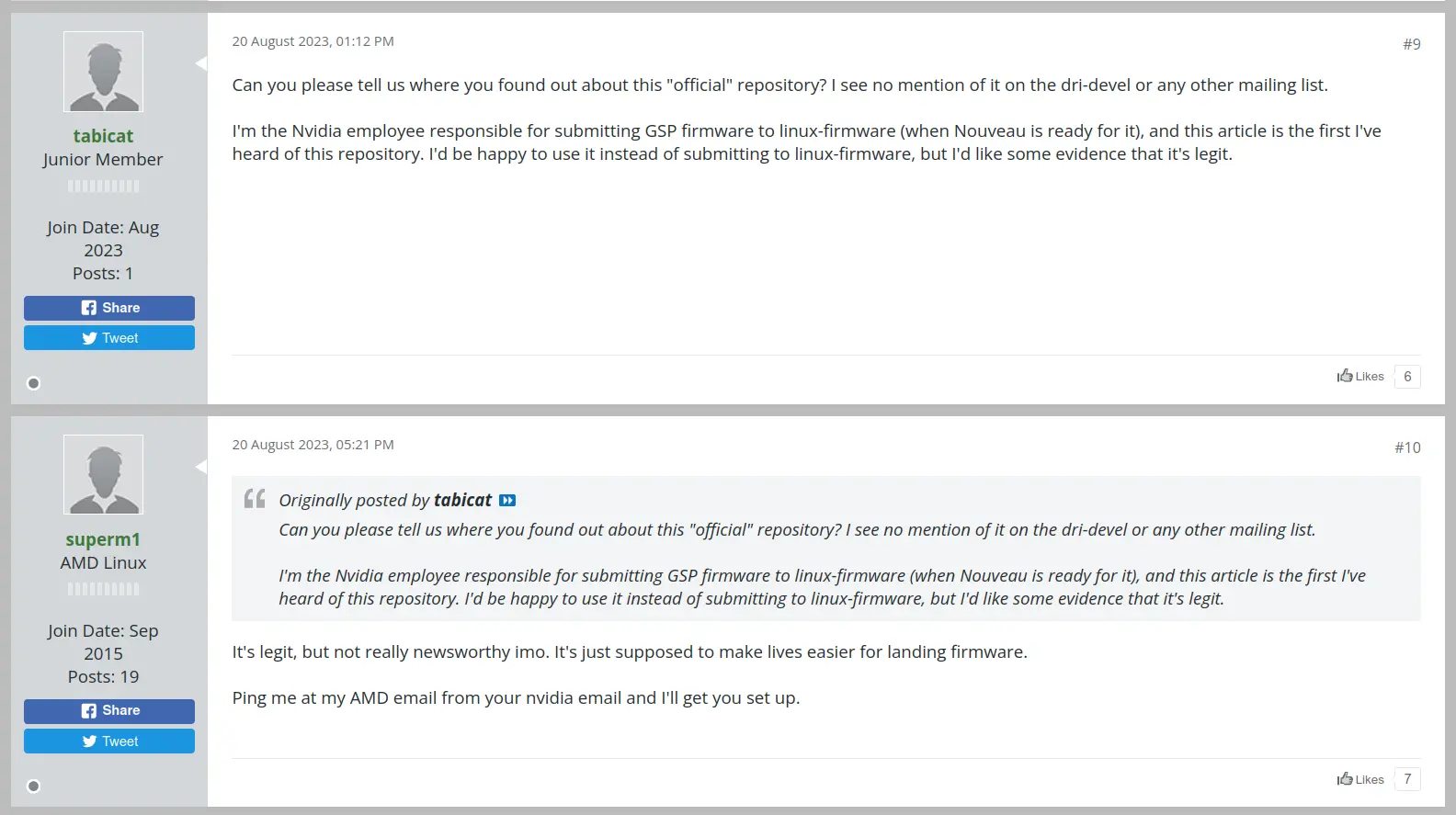this post was submitted on 21 Aug 2023
900 points (99.1% liked)
Linux
48915 readers
684 users here now
From Wikipedia, the free encyclopedia
Linux is a family of open source Unix-like operating systems based on the Linux kernel, an operating system kernel first released on September 17, 1991 by Linus Torvalds. Linux is typically packaged in a Linux distribution (or distro for short).
Distributions include the Linux kernel and supporting system software and libraries, many of which are provided by the GNU Project. Many Linux distributions use the word "Linux" in their name, but the Free Software Foundation uses the name GNU/Linux to emphasize the importance of GNU software, causing some controversy.
Rules
- Posts must be relevant to operating systems running the Linux kernel. GNU/Linux or otherwise.
- No misinformation
- No NSFW content
- No hate speech, bigotry, etc
Related Communities
Community icon by Alpár-Etele Méder, licensed under CC BY 3.0
founded 5 years ago
MODERATORS
you are viewing a single comment's thread
view the rest of the comments
view the rest of the comments

So what are considered the most linux-friendly GPUs?
AMD GPUs have open source linux drivers meaning no extra configuration is needed on install. Some linux distros make setting up Nvidia really easy, but I ran into problems years ago. I think Nvidia is theoretically releasing open source drivers soon though
Like a specific GPU or brand?
Most AMD stuff is pretty solid using the AMDGPU driver, including stuff from the RX4xx series onward plus various APU's pretty my own experience.
Intel stuff is usually ok but I've run into some weirdness with the Atom and some other stuff with integrated graphics
It is solid until you need to use openCL (hopefully this changes when RustiCL beats the closed AMD drivers)
They all work. It doesn't matter. Just pick the one that fits your usage pattern.
Not true, AMD works out of the box with almost every distro. Nvidia doesn't work out of the box on a lot (Debian for example)
But it DOES work. Debian/Arch/etc push the responsibility to the user to finish setting things up (kernel command lines, drivers, etc). How exactly is that an Nvidia problem and not just distros sticking it to their users resulting in user anger towards Nvidia?
Nothing "works out of the box" on an operating system without the OS installation process using auto-detection to guide the users through the additional steps required to setup WiFi, Bluetooth, etc. Yet for some reason when it comes to hardware GPU acceleration, the Linux distro response is just "fuck, Nvidia? figure it out yourself, I can't be arsed to add the required config files and kernel command params".
Debian doesn't push the responsibility to the user to finish setting things up though, it is designed to be complete out of the box, especially since Debian 12.
For what it's worth on my computer with a GTX 1650 and Debian 12, I am unable to use Wayland at all as the drivers simply do not work (yes, this is the nvidia-driver package, not nouveau). On Plasma, everything seems to move at a snail's pace, and on GNOME the desktop is constantly flickering and showing old portions of the screen. X11 is perfectly fine though.
On my cheap laptop with integrated AMD graphics though? Debian 12 with Wayland works like a charm and has no issues.
So, I'm going with nvidia being the problem here.
I was on Ubuntu 22, and now I'm on Arch with a 3090. Daz3d+iray/dforce works, FFXIV works, Stable Diffusion works, X11 works, everything I throw at my card just works. Blaming Wayland not working on Nvidia is just ludicrous as Wayland is it's own pile of half baked dogshit.
It does work with the nouveau driver and will display your desktop just fine.
If you want to play GTA, just add the nVidia repo that literally every distribution has.